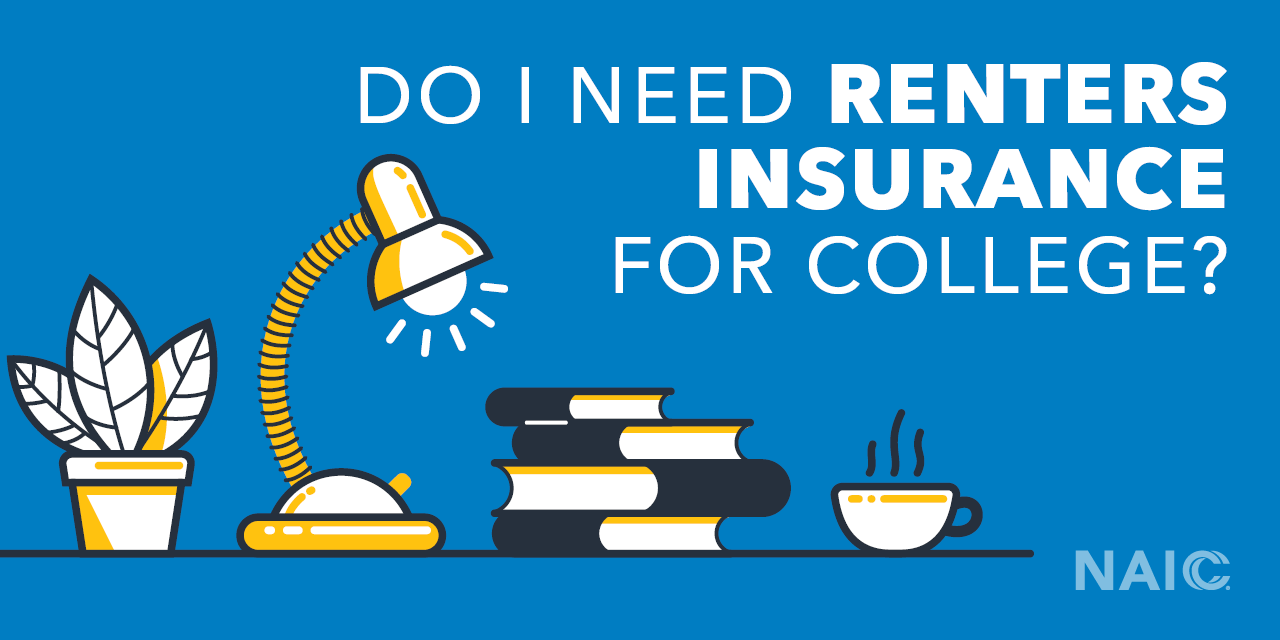
Do I Need Renters Insurance For College?
Are you headed off to college? Whether you live on or off campus, you may want to consider a renters insurance policy to protect what you own.
Should I consider a renters insurance policy at college?
As a student, you likely brought thousands of dollars worth of personal items to school with you, such as electronics, textbooks, clothes, and furniture.
But as a renter, your school's, landlord's or property management company’s insurance will not cover personal items in your rented or on-campus property. Consider a renters insurance policy to protect your items. Your school will not require you to have coverage but some landlords and companies may require you to have renters insurance.
If you live in on-campus housing and are under age 26, your belongings may be covered under your parents’ homeowners or renters’ insurance policy. However, even if your belongings are covered under your parents’ insurance policy, it may only pay up to a specified amount. Check with your agent or insurance company.
How much does renters insurance cost?
Renters insurance policies typically are affordable, and the cost depends on the coverage you select. The premiums for renters insurance average between $15 and $30 per month depending on the location and size of the rental unit and the policyholder’s possessions. Be sure to shop around. Replacing even a small number of items could cost thousands of dollars, and a basic policy can cover these costs.
Many insurance companies offer discounts if you have fire or burglar alarms, fire extinguishers, sprinkler systems, or deadbolts on exterior doors. You may also get a discount if you have more than one policy with an insurance company or had no claims on your previous policy.
Be sure to ask your agent or insurance company about the discounts they offer.
What will renters insurance cover?
Some policies may cover your living expenses if you can’t live in your home after a covered loss. Renters insurance may also pay for a visitor’s medical bills if you’re found responsible for their injuries.
Many policies cover your belongings outside of your home. For example, if someone steals items you own from your car or a hotel room, your policy will provide coverage.
What are my policy options for renters insurance?
Most policies typically provide three types of coverage: personal property, liability, and additional living expenses.
-
Personal property coverage helps pay to repair or replace personal belongings if they are damaged, destroyed, or stolen.
-
Liability insurance can help protect you if a guest is injured while in your home or apartment, or if you accidentally damage someone else’s property. Renters insurance policies have liability limits, which are the highest dollar amount the policies cover. Policies also typically include a deductible, which is the amount you must pay if a loss happens.
-
Additional Living Expenses will help pay expenses you incur because you can’t live in your home. The insurance company will not pay all your living expenses. It will only pay the difference between your previous living expenses and your new temporary expenses.
You might also have to choose between actual cash value and replacement cost value when you purchase your policy.
-
Actual cash value only pays you the current value of an item. Your personal belongings lose value over time due to things like age and wear and tear. For example, your computer might have cost $2,000, but it is five years old. The value of the computer may currently be $500, which is the amount the insurance company would pay if you had actual cash value coverage.
-
Replacement cost value coverage would reimburse you for a new computer that is similar to the computer that was destroyed.
For more information and definitions, check out the NAIC's Consumer Guide to Home Insurance.
About the National Association of Insurance Commissioners
As part of our state-based system of insurance regulation in the United States, the National Association of Insurance Commissioners (NAIC) provides expertise, data, and analysis for insurance commissioners to effectively regulate the industry and protect consumers. The U.S. standard-setting organization is governed by the chief insurance regulators from the 50 states, the District of Columbia and five U.S. territories. Through the NAIC, state insurance regulators establish standards and best practices, conduct peer reviews, and coordinate regulatory oversight. NAIC staff supports these efforts and represents the collective views of state regulators domestically and internationally.
